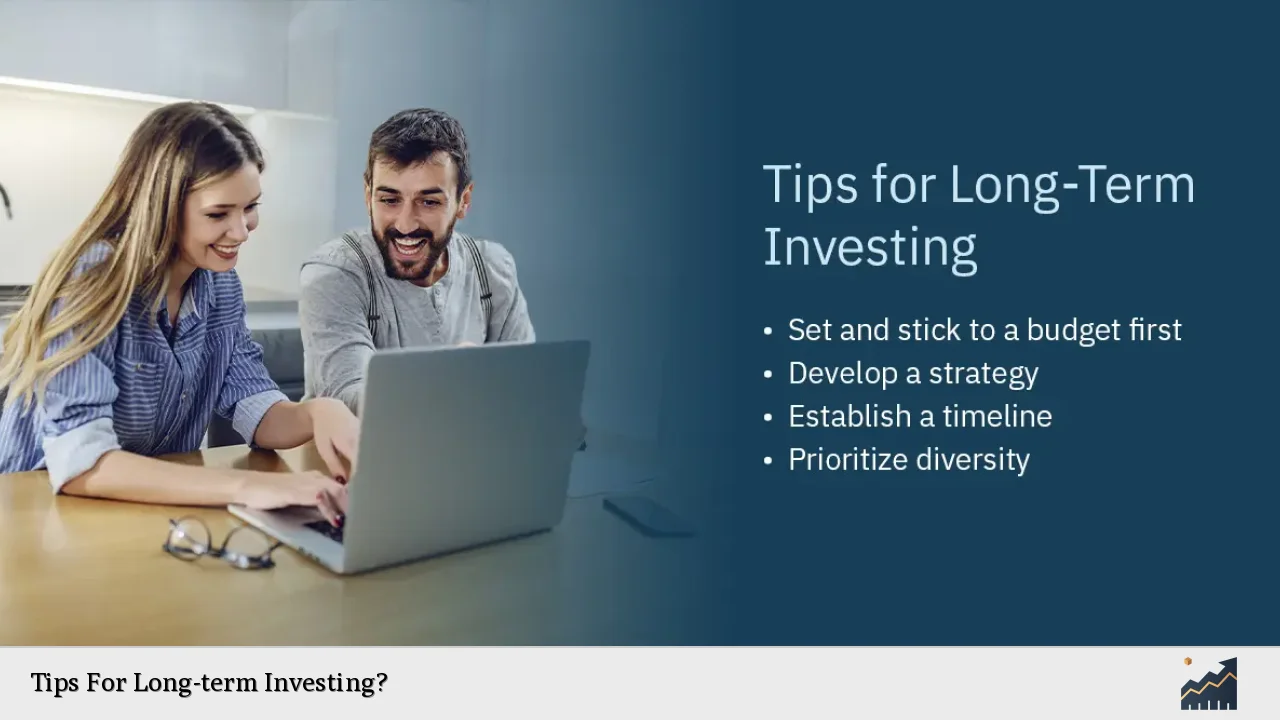Long-term investing is a strategy focused on purchasing assets and holding them for extended periods, typically years or decades. This approach allows investors to benefit from the compounding of returns, reduced transaction costs, and the ability to ride out market volatility. By adopting a long-term perspective, investors can avoid the pitfalls of short-term trading, such as emotional decision-making and frequent buying and selling. The goal is to build wealth over time by focusing on solid investment fundamentals rather than fleeting market trends.
Investing over the long term requires discipline and a clear strategy. It is essential to understand your financial goals, risk tolerance, and the types of investments that align with your objectives. This article outlines several key tips for successful long-term investing, providing practical solutions for both novice and experienced investors.
| Tip | Description |
|---|---|
| Stick to Your Plan | Adhere to your long-term investment strategy without succumbing to market fluctuations. |
| Diversify Your Portfolio | Spread investments across various asset classes to mitigate risk. |
Stick to Your Plan
One of the most crucial aspects of long-term investing is developing a solid investment plan and sticking to it. Once you have established your financial goals, it is vital to choose an investment strategy that aligns with those goals. This consistency helps prevent impulsive decisions that could negatively impact your portfolio.
Market fluctuations can tempt investors to sell their assets during downturns. However, successful long-term investors understand that markets will recover over time. By maintaining a disciplined approach and adhering to your plan, you can avoid locking in losses during temporary declines.
Important info: Regularly reviewing your investment strategy is essential but should not lead you to make drastic changes based on short-term performance. Instead, focus on the long-term trajectory of your investments.
Diversify Your Portfolio
Diversification is a fundamental principle of investing that involves spreading your investments across various asset classes and sectors. By not putting all your eggs in one basket, you reduce the risk associated with any single investment underperforming.
Investing in a mix of stocks, bonds, real estate, and other assets can help balance out potential losses in one area with gains in another. For instance, if the stock market experiences a downturn, bonds or real estate may still perform well, protecting your overall portfolio value.
Important info: A well-diversified portfolio not only mitigates risk but also positions you to capitalize on growth opportunities across different markets.
Don’t Get Caught Up in Trends
The allure of quickly rising stocks or popular investment trends can lead many investors astray. Often, these “hot” investments are short-lived and can result in significant losses if bought at inflated prices. Long-term investing requires patience and a focus on quality rather than excitement.
Instead of chasing trends, concentrate on investments with solid fundamentals that demonstrate consistent growth potential over time. These investments may not be as thrilling but are more likely to yield positive returns in the long run.
Important info: Avoid making emotional decisions based on market hype; instead, conduct thorough research before committing your funds.
Reassess Your Portfolio Regularly
While it’s important to stick to your long-term plan, periodic reassessment of your portfolio is equally vital. Market conditions change, and so do the performance prospects of individual investments. Regular evaluations allow you to ensure that your holdings still align with your financial goals.
This doesn’t mean making impulsive changes based on short-term performance; rather, it involves analyzing how well each investment fits into your overall strategy. If certain assets no longer meet your criteria or if new opportunities arise that better align with your goals, consider adjusting your portfolio accordingly.
Important info: Keeping an eye on the performance of mutual funds or stocks can help you make informed decisions about when to hold or sell.
Invest in Managed Investment Schemes
For those who prefer a hands-off approach or lack the time to manage their portfolios actively, investing in managed investment schemes can be an excellent option. These schemes include mutual funds, exchange-traded funds (ETFs), and real estate investment trusts (REITs), which are managed by professionals who implement investment strategies on behalf of investors.
By investing in these managed schemes, you benefit from the expertise of fund managers who follow best practices for long-term investing. They are trained to diversify portfolios effectively and make informed decisions based on market conditions.
Important info: Managed investment schemes can provide peace of mind for investors who may not have the time or expertise to manage their investments directly.
Invest Little and Often
A practical approach for long-term investing is to invest small amounts regularly rather than making large lump-sum investments. This strategy is known as dollar-cost averaging, where you invest a fixed amount at regular intervals regardless of market conditions.
By consistently contributing to your investments over time, you can take advantage of market fluctuations—buying more shares when prices are low and fewer when prices are high. This method helps smooth out the effects of volatility on your overall investment returns.
Important info: Investing little and often encourages disciplined saving habits while reducing the emotional stress associated with trying to time the market perfectly.
Focus on Quality Investments
When selecting assets for your portfolio, prioritize quality over quantity. Look for companies with strong fundamentals—such as consistent earnings growth, competitive advantages, and sound management practices. High-quality investments tend to perform better over time compared to those driven by speculation or hype.
Investing in established companies with proven track records can provide more stability during turbulent market periods. These companies are often better equipped to weather economic downturns and emerge stronger when conditions improve.
Important info: Conduct thorough research before committing funds; understanding what makes an investment “quality” will serve you well in the long run.
Understand Your Risk Tolerance
Every investor has a unique risk tolerance based on their financial situation, investment goals, and personal comfort levels with volatility. Understanding how much risk you are willing to take will help shape your investment strategy and asset allocation decisions.
Younger investors may have a higher risk tolerance since they have more time to recover from potential losses compared to those nearing retirement who may prefer safer investments. Assessing your risk tolerance ensures that you build a portfolio that aligns with both your financial objectives and emotional comfort levels regarding market fluctuations.
Important info: Regularly reassessing your risk tolerance as circumstances change—such as income level or life events—can help maintain alignment between your goals and investment choices.
Keep Expenses Low
Investment costs can significantly impact overall returns over time; thus, keeping expenses low should be a priority for long-term investors. Look for low-cost index funds or ETFs that offer broad market exposure without high management fees.
Minimizing transaction costs by avoiding frequent trading also contributes positively to long-term performance. The less you pay in fees, the more money stays invested in growing your portfolio.
Important info: Always review the fee structures associated with any investment vehicle; even small differences can compound into substantial amounts over many years.
Be Patient
Patience is perhaps one of the most critical virtues for successful long-term investing. Markets will inevitably experience ups and downs; however, maintaining a focus on long-term goals rather than short-term fluctuations will help keep emotions in check.
Investors who remain patient through market volatility are often rewarded when they allow their investments time to grow fully. Understanding that wealth accumulation takes time helps reinforce commitment to a long-term strategy rather than reacting impulsively during downturns.
Important info: Embrace the concept that investing is a marathon rather than a sprint; staying invested through various economic cycles typically yields better outcomes over time.
FAQs About Long-term Investing
- What is long-term investing?
Long-term investing involves purchasing assets with plans to hold them for several years or decades. - How do I start long-term investing?
Begin by setting clear financial goals and developing an investment strategy that aligns with those objectives. - Why is diversification important?
Diversification helps mitigate risk by spreading investments across various asset classes. - What should I consider when choosing investments?
Focus on quality companies with strong fundamentals and assess how they align with your risk tolerance. - How often should I review my portfolio?
Periodically reassess your portfolio’s performance while avoiding impulsive changes based on short-term trends.

